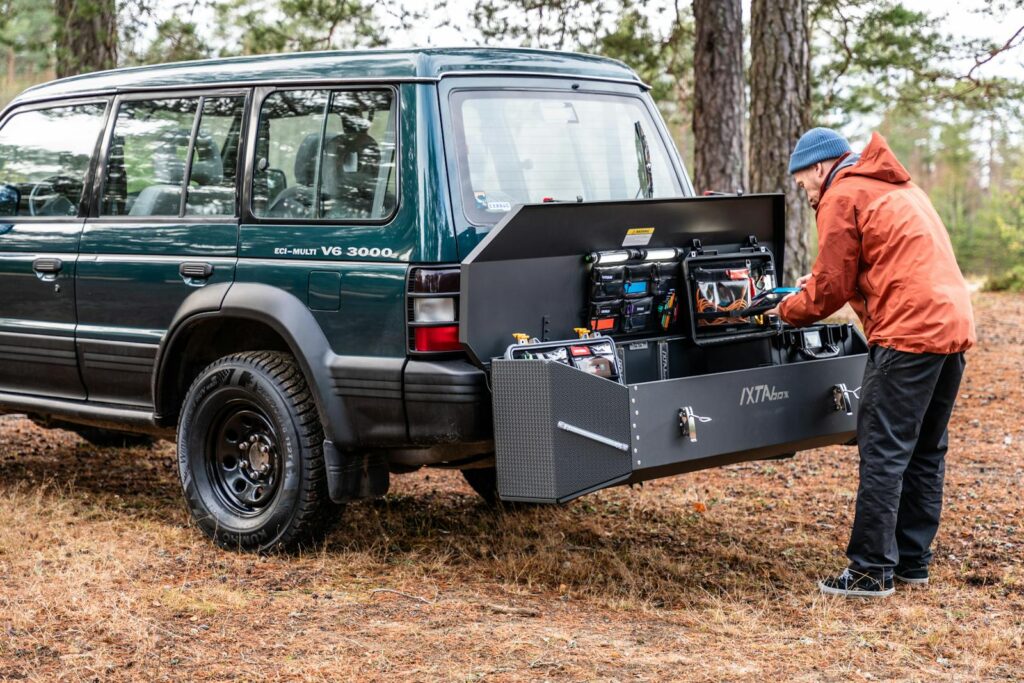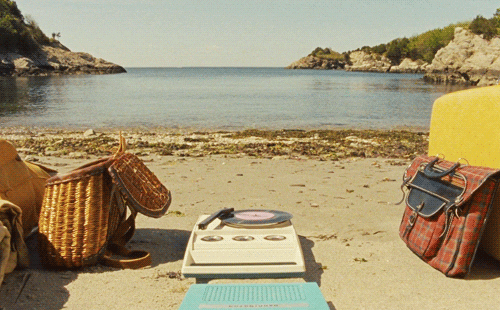The Beginner’s Guide to Prepper Radios for Total Self-Reliance
When Everything Goes Dark
Picture this: You’re home watching Netflix when the power cuts out. No big deal, right? Except your phone has no signal either. The WiFi’s dead. Your neighbor’s house is pitch black too.
This isn’t some apocalypse movie—it’s exactly what happened to my buddy Mike during the ice storm last February. Three days without power, cell towers down, and no idea what was happening beyond his street. Meanwhile, his neighbor with a ham radio was getting weather updates, coordinating with other operators, and even helping coordinate emergency services.
That neighbor probably saved lives that week.
Here’s what really gets me: After Hurricane Maria hit Puerto Rico, over three-quarters of cell towers went down. Millions of people were completely cut off. But ham radio operators? They kept talking, kept coordinating rescues, kept families connected.
If you’re serious about being prepared—really prepared—you need backup communications that don’t depend on the same fragile systems everyone else relies on. That means getting yourself a proper emergency radio setup.

What Makes a Radio “Prepper-Ready”?
Look, I’m not talking about that little AM/FM radio gathering dust in your garage. A real prepper radio is built different. It’s tougher, more versatile, and designed to work when everything else fails.
The whole point is independence. While everyone else is staring at their dead phones, you’re getting weather alerts directly from the National Weather Service. You’re hearing from other radio operators in your area. You might even be coordinating with emergency services if you’ve got the right setup and licenses.
Why Your Phone Isn’t Enough
I get it—your smartphone does everything. But here’s the reality check: cell networks are incredibly fragile. FEMA studied major hurricanes from 2010 to 2020 and found cell service failed in 87% of them. Eighty-seven percent!
Your phone depends on towers that can be knocked out by wind, ice, or just too many people trying to use them at once. Emergency radios work differently. They pick up signals that travel much farther and don’t rely on local infrastructure that can get wiped out.
Plus, when was the last time your phone battery lasted three days? My emergency radio can run for weeks on a set of AAs, or I can crank it by hand if I have to.
Types of Emergency Radios (And Which One You Actually Need)
Weather Radios – Your First Line of Defense
If you only get one radio, make it a NOAA weather radio. These things are literally lifesavers. The National Weather Service broadcasts 24/7 on dedicated frequencies, and when severe weather hits, they’ll wake you up with alerts.
I learned this the hard way during a tornado warning at 2 AM. My weather radio screaming got me and the family to the basement with minutes to spare. The people down the street? They slept right through it and woke up to their roof in the neighbor’s yard.
What to look for:
- SAME technology (filters alerts to your specific area)
- Multiple power options
- Loud alert tone that’ll wake the dead
Ham Radios – The Swiss Army Knife
Ham (amateur) radio is where things get serious. With the right license and equipment, you can talk to people across the country or even around the world. During disasters, ham operators become the backbone of emergency communications.
The downside? You need an FCC license, which means studying and taking a test. But honestly, it’s not that hard. I passed mine in about two weeks of studying, and thousands of new people get licensed every year.
Why ham radio matters:
- Incredible range (sometimes worldwide)
- Active emergency networks in most areas
- Can relay messages when other systems fail
CB Radio – Simple and Effective
CB doesn’t get much respect these days, but it’s still useful, especially if you spend time on the road. No license required, easy to use, and truckers still monitor it. Range is limited—maybe 5-10 miles on a good day—but for local communication, it works.
GMRS/FRS – Family-Friendly Options
These are basically souped-up walkie-talkies. FRS (Family Radio Service) requires no license and works great for coordinating with family or neighbors within a few miles. GMRS (General Mobile Radio Service) requires a license but gives you more power and better range.
I keep a set in each vehicle and give them to family members during camping trips or emergencies. Simple, reliable, and everyone can figure them out quickly.

Essential Features That Actually Matter
Multiple Power Sources (Because Batteries Always Die at the Worst Time)
Your emergency radio needs at least three ways to get power:
- Regular batteries – Keep extras stored properly
- Hand crank – When everything else fails, your arm still works
- Solar panel – Free power during the day
Some of the newer models also have rechargeable internal batteries and can charge via USB. The more options, the better.
Weather Alerts That Don’t Suck
Basic weather radios just squawk at you for everything. Good ones use SAME technology to filter alerts by your specific county or area. Trust me, you don’t want to be woken up at 3 AM for a thunderstorm 100 miles away.
Built to Last
Emergency gear gets beat up. Look for:
- Water resistance (at least splash-proof)
- Rubber bumpers or protective housing
- Quality construction that can handle being dropped
I’ve seen too many people buy cheap emergency radios that break the first time they actually need them. Spend the extra money upfront.
Real-World Examples (Because This Stuff Actually Happens)
Texas Freeze, 2021: Over 4 million homes lost power. Cell service was spotty at best. Local officials used emergency radio broadcasts to coordinate warming centers and issue boil-water notices when text alerts couldn’t get through.
Hurricane Ida, 2021: A friend in Louisiana lost everything—power, internet, cell service. His weather radio kept him updated on rescue operations and when it was safe to venture out. More importantly, it told him when NOT to go outside during the worst of it.
Wildfire evacuations, California: Ham radio operators have become crucial for coordinating evacuations when cell towers get overwhelmed or burn down. These aren’t professional emergency workers—just regular people with radios who step up when needed.
Fun Radio Facts That Might Surprise You
- Some WWII-era radios still work perfectly – Talk about built to last! I know collectors who use 80-year-old equipment regularly.
- NOAA weather radio reaches 98% of Americans – Even in remote areas where cell service is non-existent.
- Hand-crank radios generate 2-4 watts – That’s enough to power the radio and give your phone a tiny emergency charge.
- Ham radio licenses have surged since 2020 – More people are getting serious about emergency communications.
- NASA uses ham radio on the space station – If it’s good enough for astronauts, it’s probably good enough for your emergency kit.
- The first SOS ever sent was by radio – During the 1909 RMS Republic rescue, leading to hundreds of lives saved.
- Emergency radios inspired “all-in-one” survival gear – The idea of combining radio, flashlight, and charging in one device started with survivalists in the ’90s.
- Solar-powered radios date to the 1970s – Not as new as you might think, just much better now.
- Over 700,000 ham operators form backup communication networks – These volunteers often become the lifeline during major disasters.
- Some emergency radios double as walkie-talkies – Letting you both receive alerts and communicate with others nearby.
 Learning from the Experts: John “Signal” Goss
Learning from the Experts: John “Signal” Goss
If you’re getting serious about emergency radio, you should know about John “Signal” Goss. He’s not some YouTube celebrity, but he’s respected in the radio community for good reason. Licensed ham operator, former volunteer firefighter, and someone who actually tests this gear in real conditions.
John runs Signal Ready (signalready.com) and breaks down complex radio topics for regular folks. His gear reviews are honest, his tutorials are practical, and he doesn’t try to sell you the most expensive gear just because he can.
What I like about John’s approach is that he focuses on real-world usefulness over technical specs. He’s the guy who’ll tell you that a $50 radio that works is better than a $500 radio you don’t understand.
If you’re building your first emergency radio setup, his site is worth bookmarking.
Your Most Common Questions (Answered Honestly)
Q: Do I really need a license for emergency communications?
A: For listening to weather and news? No. For transmitting on ham frequencies? Yes, you need an FCC license. But it’s easier to get than a driver’s license and opens up way more communication options.
Q: How often should I test my emergency radio?
A: Monthly minimum. I test mine every time I change smoke detector batteries—easy to remember, and it ensures everything works when I need it.
Q: Can these radios really charge my phone?
A: Sort of. Hand-crank models might give you 2-5% charge—enough for a quick emergency call but not much else. Don’t count on it as your main phone charging solution.
Q: What’s the difference between expensive and cheap emergency radios?
A: Build quality, features, and reliability. Cheap radios work fine until you actually need them. Then they break, batteries die faster, or reception is terrible when it matters most.
Q: Should I get a ham radio license?
A: If you’re serious about emergency preparedness, absolutely. The test isn’t hard, the license is good for 10 years, and it opens up a whole world of emergency communication networks.
Q: What accessories do I actually need?
A: Extra batteries, a better antenna if possible, and a waterproof case. Everything else is nice-to-have but not essential.
Q: How long do emergency radios last?
A: Quality ones can last decades with proper care. I have a 15-year-old weather radio that still works perfectly.
Q: Where can I learn more about emergency radio?
A: Start with your local amateur radio club. Most areas have one, and they’re usually happy to help newcomers. Online, Signal Ready is a great resource for practical information.
Q: What’s the best emergency radio for beginners?
A: Start with a quality NOAA weather radio that has multiple power options. Once you understand how useful emergency communications can be, you can expand from there.
Q: Are solar panels on radios actually useful?
A: Yes, but don’t expect miracles. They work great for maintaining charge during extended outages but won’t power a dead radio immediately. Think of solar as a long-term solution, not a quick fix.

A Word on Preparedness and Wisdom
Being prepared isn’t about paranoia—it’s about being responsible. As Proverbs 22:3 reminds us: “A prudent man foresees evil and hides himself, but the simple pass on and are punished.”
Taking steps to prepare for emergencies, including learning emergency communications, shows wisdom and care for your family. It’s not about expecting the worst; it’s about being ready if the worst happens.
Take Action This Week
Here’s what I want you to do: Spend an hour this week thinking about your emergency communications. If you don’t have any emergency radio, start shopping for a basic weather radio. If you already have one, test it and make sure you know how to use all its features.
Consider getting your ham license if you want to get serious about emergency preparedness. Join a local radio club or online community. Most importantly, don’t just buy gear and forget about it—practice using it so you’re ready when it matters.
Remember what happened to my friend Mike during that ice storm. Don’t be the person staring at a dead phone wondering what’s happening. Be the neighbor with the radio who knows what’s going on and can help others.
The time to prepare is before you need it.